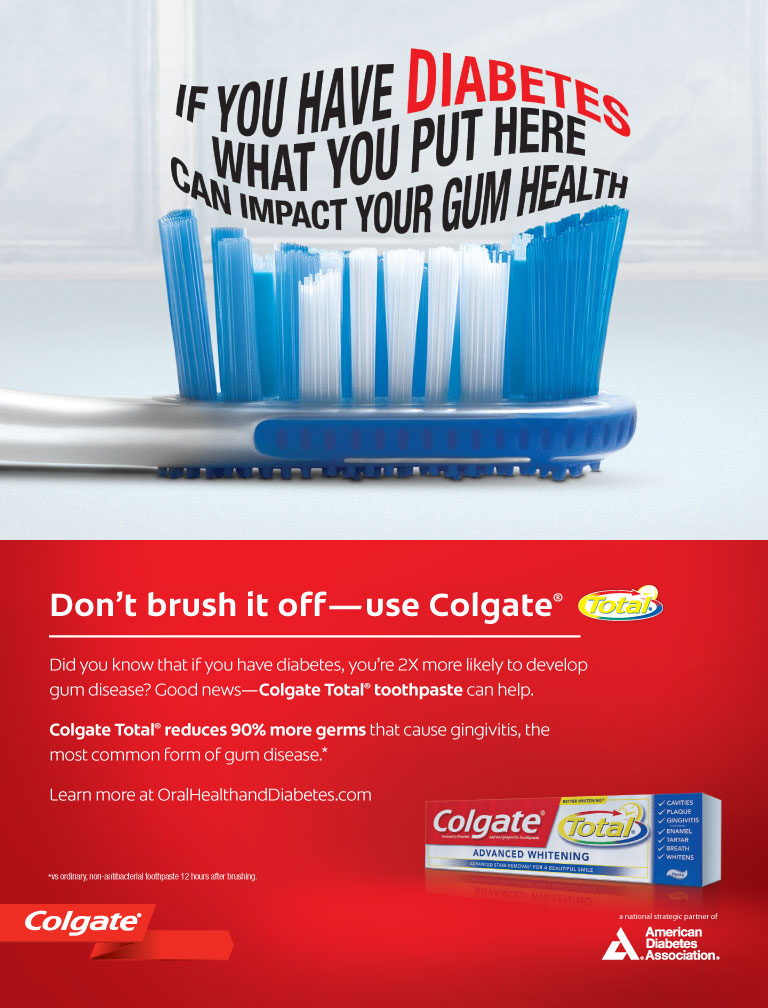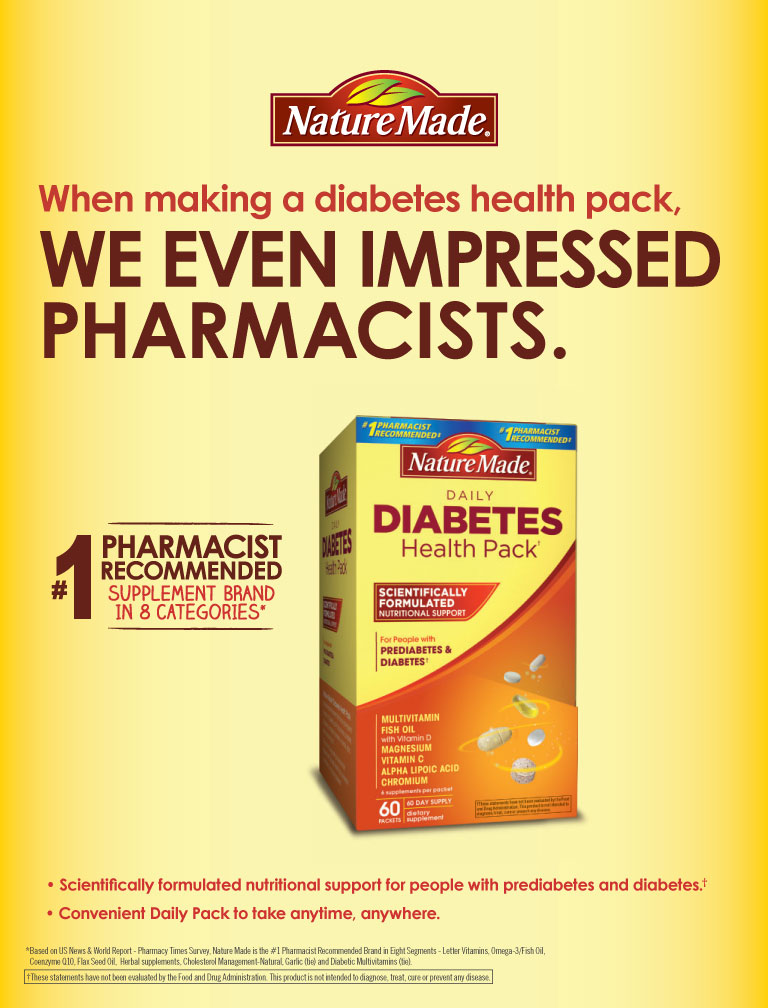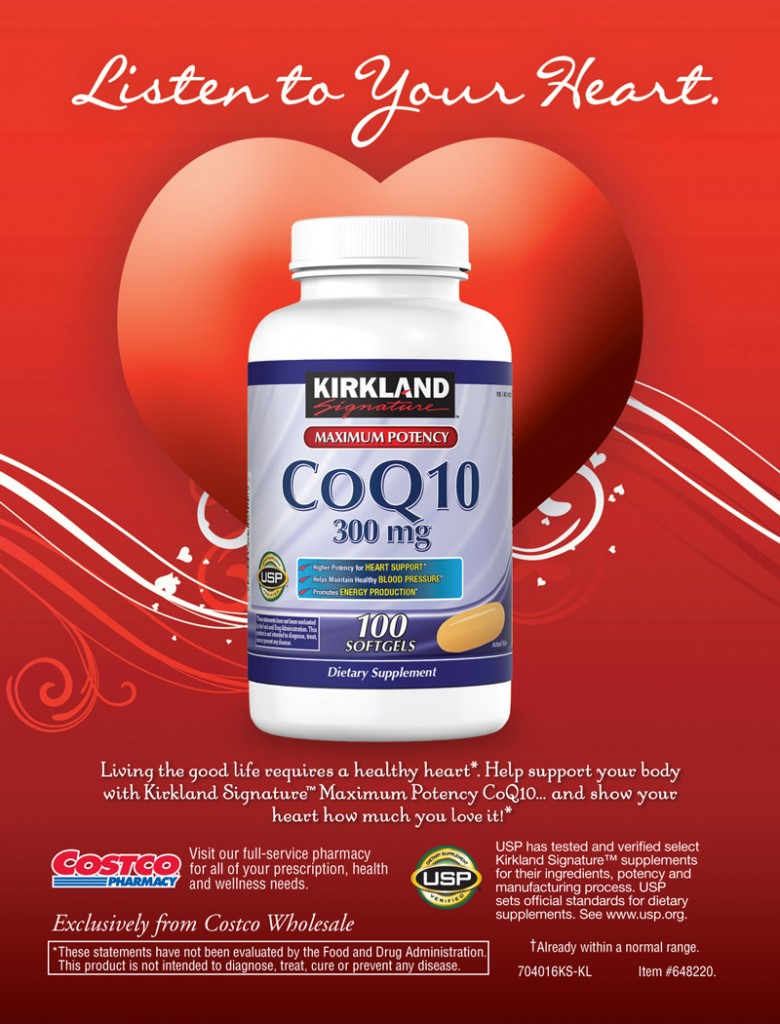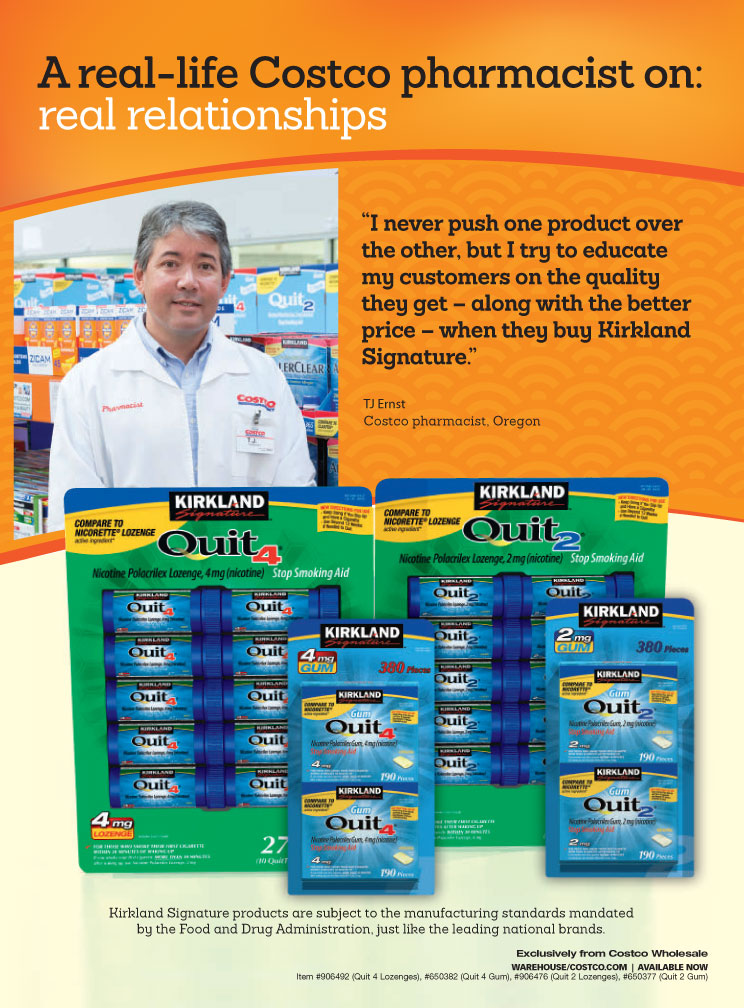
By Janis Roszler, MSFT, RD, CDE, LD/N For years, experts thought people with apple-shaped bodies had greater worries. Fat stored in the stomach area puts them at a higher risk for health problems, such as diabetes and heart disease. They also believed that pear-shaped folks, who stored their fat in the buttocks, thighs and hips, were protected from these health issues. However, a recent study shows that the belief about pear-shaped people may not be correct. In the study, experts found that both pear-shaped and apple-shaped people had an increased risk of metabolic syndrome. Metabolic syndrome is a group of risk factors, such as high fasting blood glucose, high blood pressure and lower HDL “good” cholesterol levels, that can lead to type 2 diabetes and heart disease. Fat stored in the buttocks, thigh and hip area doesn’t just sit there. It’s active and releases two proteins: chemerin and omentin-1. People with high chemerin levels also tend to have high blood pressure, increased insulin resistance, increased signs of inflammation, high triglycerides and lower levels of HDL cholesterol. Those with low levels of omentin-1 had high triglycerides, a high blood glucose level and a low level of HDL cholesterol. Where does your body put any extra weight you gain? Does it end up in your stomach area so you appear round, like an apple? Or does it head over to your buttocks, thigh and hip areas, so you look more like a pear: smaller at the top and rounder at the bottom? KEYS TO WEIGHT LOSS If you carry extra weight in either your stomach or your buttocks, hips and thighs, losing weight will lower your chemerin level, which in turn, reduces your risk of metabolic syndrome and heart disease. Losing weight isn’t always easy, but it can be done. The National Weight Loss Registry is a list of people who lost a minimum of 30 pounds and have kept the weight off for at least one year. As a pear or an apple, you may be tempted to do belly-focused or butt-focused exercises to reduce the fat stores in these areas. While spot-focused exercises can help tone and strengthen muscle, they don’t reduce the fat in those areas. Your best bet is to focus on the health of your entire body. GET YOUR Zs People who sleep fewer than seven hours a night or more than nine hours a night are more likely to gain weight than people who sleep seven or eight hours a night. If you are worried about your growing belly, increase your soluble fiber intake. Research shows that people who consume 10 g of this type of fiber every day store less fat in their belly area. Food sources include nuts, beans, dried peas, flaxseeds, lentils, oatmeal, oat cereals and oat bran, psyllium, carrots, celery, cucumbers, apples, pears, blueberries and strawberries. It really doesn’t matter what shape you have: Just focus on becoming a healthier you.
The post Should You Care if You’re an Apple or a Pear? appeared first on Fall 2016 Issue | CDiabetes Online Magazine.
]]>
The post Should You Care if You’re an Apple or a Pear? appeared first on Fall 2016 Issue | CDiabetes Online Magazine.
]]>
The post No Charge OneTouch? Meter Coupon appeared first on Fall 2016 Issue | CDiabetes Online Magazine.
]]>
The post No Charge OneTouch? Meter Coupon appeared first on Fall 2016 Issue | CDiabetes Online Magazine.
]]>
In order to live an active and mobile lifestyle, it is important to positively promote your joint health. So, what is joint health? The joint is where our bones connect and it is a complex structure of many specialized tissues that function together to provide the means for motion. Inside the joint, there is cartilage and viscous fluid. The cartilage is resilient with tremendous shock absorbing capability while the viscous fluid bathes and lubricates the joint. As a consequence of aging, trauma, and wear and tear on the joint, cartilage may be broken down, which can compromise joint movement. In order to remain active and live a healthy lifestyle, it is critically important to take care of your joints. How can I promote joint health? There are many ways to promote your joint health such as: eating healthy staying active and maintaining a healthy weight visiting your healthcare provider regularly taking your medications as prescribed taking dietary supplements You should also consider taking a high quality glucosamine and chondroitin sulfate supplement. Glucosamine, in combination with chondroitin sulfate, helps inhibit enzymes responsible for the breakdown of cartilage and supports the maintenance of healthy joints. Choosing the right glucosamine/chondroitin product Recent published clinical studies have further validated the combination of high quality glucosamine/chondroitin supplementation for joint health. It is important to make sure you purchase a high quality glucosamine/chondroitin combination product, and below are some of the items to look for: Reputable brand cited in published clinical studies Serving size of trademarked active ingredients are the same as used in clinical studies Quality seal from third party public health and safety organizations Take away message It is important to closely monitor and take care of your joints to remain active late in life. It is recommended to consult your physician before taking any medication or dietary supplement.
The post Introduction to Joint Health appeared first on Fall 2016 Issue | CDiabetes Online Magazine.
]]>
In order to live an active and mobile lifestyle, it is important to positively promote your joint health. So, what is joint health? The joint is where our bones connect and it is a complex structure of many specialized tissues that function together to provide the means for motion. Inside the joint, there is cartilage and viscous fluid. The cartilage is resilient with tremendous shock absorbing capability while the viscous fluid bathes and lubricates the joint. As a consequence of aging, trauma, and wear and tear on the joint, cartilage may be broken down, which can compromise joint movement. In order to remain active and live a healthy lifestyle, it is critically important to take care of your joints.
How can I promote joint health?
There are many ways to promote your joint health such as:
- eating healthy
- staying active and maintaining a healthy weight
- visiting your healthcare provider regularly
- taking your medications as prescribed
- taking dietary supplements
You should also consider taking a high quality glucosamine and chondroitin sulfate supplement. Glucosamine, in combination with chondroitin sulfate, helps inhibit enzymes responsible for the breakdown of cartilage and supports the maintenance of healthy joints.
Choosing the right glucosamine/chondroitin product
Recent published clinical studies have further validated the combination of high quality glucosamine/chondroitin supplementation for joint health. It is important to make sure you purchase a high quality glucosamine/chondroitin combination product, and below are some of the items to look for:
- Reputable brand cited in published clinical studies
- Serving size of trademarked active ingredients are the same as used in clinical studies
- Quality seal from third party public health and safety organizations
Take away message
It is important to closely monitor and take care of your joints to remain active late in life. It is recommended to consult your physician before taking any medication or dietary supplement.
The post Introduction to Joint Health appeared first on Fall 2016 Issue | CDiabetes Online Magazine.
]]>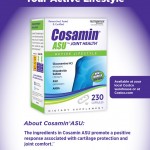
The post Cosamin ? ASU for Joint Health appeared first on Fall 2016 Issue | CDiabetes Online Magazine.
]]>
The post Cosamin ? ASU for Joint Health appeared first on Fall 2016 Issue | CDiabetes Online Magazine.
]]>
By Martha Funnell, MS, RN, CDE Planning for your Golden Years is something you can do when you are having a bad day or you are feeling overwhelmed by all you need to get done. One of the ways most people plan for their senior years is by saving money so they can be secure and have financial resources to do what they want. While having the resources you need is important, most people dream about being healthy enough to do what they want to do in their Golden Years. Just like you need to start saving your money well before retirement, there are also steps you can take now to ensure your good health in the future. THE FOUR STEPS TO STAYING HEALTHY AS YOU AGE A large study showed that there are four steps to help middle aged people stay healthy as they get older. 1. Eat fruits and vegetables. 2. Exercise. 3. Drink alcohol moderately. 4. Don’t smoke. You've heard about these four steps for many years. What’s new is that this study showed how the more you stick to the four steps, the greater the benefit in terms of staying healthier, longer. When people reach middle age, they often think about how to spend their Golden Years. Most of us picture those years as a time when we get to do all the things we enjoy but don’t have time to do when work, family and other day-to-day tasks keep us busy. LIVE LONGER WITH DIABETES Although this study was not specifically about people with diabetes, the good news is that the four steps to staying healthy as you age can also help you manage your diabetes and avoid diabetes problems over the long term. OVERCOMING OBSTACLES As part of your diabetes care, you and your healthcare provider probably set an A1C goal—often less than 7 percent. But it can be hard to reach your target A1C because obstacles can get in the way. For example: maybe you are not able to take the medicines you need, or you have side effects from your medicines. Or, maybe you have other health problems. In addition, try not to get discouraged if you are taking steps to stay-ing healthy and you don’t see immediate improvements in your A1C level. It can take time for the changes in your A1C level to catch up with your healthy-living efforts. If your A1C is not at your target, talk to your healthcare provider about changes you can make in your treatment plan to help you get there. THE GOLDEN YEARS So what do these studies mean for you and your Golden Years? Working to manage your diabetes and keeping yourself healthy today will pay off in the future, making your Golden Years as good as gold. 50% A study of adults with an average age of 62, showed that people with type 2 diabetes who were able to lower their A1C levels by about 1% over five years were 50% less likely to die during that time than people whose A1C did not improve. They were also 50% less likely to have heart disease.
The post Planning For The Golden Years appeared first on Fall 2016 Issue | CDiabetes Online Magazine.
]]>
The post Planning For The Golden Years appeared first on Fall 2016 Issue | CDiabetes Online Magazine.
]]>
Bring this ad to your Costco pharmacist for your free meter.
The post Free Bayer Contour?Next Meter Coupon appeared first on Fall 2016 Issue | CDiabetes Online Magazine.
]]>
Bring this ad to your Costco pharmacist for your free meter.
Click here to download this ad

The post Free Bayer Contour?Next Meter Coupon appeared first on Fall 2016 Issue | CDiabetes Online Magazine.
]]>
By Erin Palinski-Wade RD, LDN, CDE When it comes to controlling your blood glucose, you have probably researched the impact of everything from food, to exercise, to weight control. But have you looked into how spices may impact it? Cinnamon is a spice that doesn’t just add great flavor to foods; it may help to lower blood glucose as well. The best benefit it offers is that it’s all-natural and considered safe for most people with diabetes. Does it sound too good to be true? In Medieval times, cinnamon was used for medicinal purposes thanks to its high antioxidant properties. Research now shows us that it may be a powerful player in the fight against diabetes. Cinnamon may help to lower blood glucose levels by decreasing insulin resistance. When your cells become resistant to insulin, the glucose-lowering hormone in your body, they do not allow insulin to carry glucose into your cells. This results in glucose remaining in your bloodstream and rising over time, eventually leading to diabetes. Both whole cinnamon and extracted cinnamon have been shown to lower blood glucose levels. Cinnamon has also been shown to help reduce unhealthy LDL cholesterol levels and blood pressure, both of which are conditions that can increase your risk of heart disease. One down side is that everything that Mother Nature puts into the cinnamon plant also ends up in the finished product. This includes water soluble as well as fat soluble compounds. Our bodies have no problem processing water soluble compounds, but fat soluble compounds tend to be stubborn for our bodies to digest. When choosing a form of cinnamon, we suggest you look for a water extracted concentrate without the fat soluble compounds. Water extracted forms can maximize the health benefits, while minimizing the risks of fat soluble buildup. The extraction process allows the beneficial water soluble components of cinnamon to stay, providing you with the same health benefits of whole cinnamon in a much smaller portion. When looking for water extracted cinnamon, it’s important that you read the label and look specifically for the term “water extracted.” Because it is more concentrated, you can take fewer capsules to get all the health benefits of cinnamon. This may be more practical than trying to incorporate large amounts of whole cinnamon into your meal plan. CinSulin Water-extracted cinnamon is backed by five human clinical studies, all of which are double blind, peer reviewed and published. In addition, UC Davis completed a meta analysis to validate the results of these human clinical studies. They found support that water extracted cinnamon lowered fasting blood glucose an average of 10%. If you are considering using cinnamon to help control blood glucose levels, make sure you discuss this with your certified diabetes educator or other healthcare provider. If you use cinnamon in combination with other medicines or supplements that also lower glucose levels, you may increase your risk of hypoglycemia. Your healthcare provider can work with you to make sure you incorporate cinnamon into your diabetes treatment plan in a way that works best for you.
The post How Water Extracted Cinnamon Can Improve Your Blood Glucose Control appeared first on Fall 2016 Issue | CDiabetes Online Magazine.
]]>
By Erin Palinski-Wade RD, LDN, CDE
When it comes to controlling your blood glucose, you have probably researched the impact of everything from food, to exercise, to weight control. But have you looked into how spices may impact it? Cinnamon is a spice that doesn’t just add great flavor to foods; it may help to lower blood glucose as well. The best benefit it offers is that it’s all-natural and considered safe for most people with diabetes.
Does it sound too good to be true? In Medieval times, cinnamon was used for medicinal purposes thanks to its high antioxidant properties. Research now shows us that it may be a powerful player in the fight against diabetes.
Cinnamon may help to lower blood glucose levels by decreasing insulin resistance. When your cells become resistant to insulin, the glucose-lowering hormone in your body, they do not allow insulin to carry glucose into your cells. This results in glucose remaining in your bloodstream and rising over time, eventually leading to diabetes. Both whole cinnamon and extracted cinnamon have been shown to lower blood glucose levels. Cinnamon has also been shown to help reduce unhealthy LDL cholesterol levels and blood pressure, both of which are conditions that can increase your risk of heart disease.
One down side is that everything that Mother Nature puts into the cinnamon plant also ends up in the finished product. This includes water soluble as well as fat soluble compounds. Our bodies have no problem processing water soluble compounds, but fat soluble compounds tend to be stubborn for our bodies to digest.
When choosing a form of cinnamon, we suggest you look for a water extracted concentrate without the fat soluble compounds. Water extracted forms can maximize the health benefits, while minimizing the risks of fat soluble buildup. The extraction process allows the beneficial water soluble components of cinnamon to stay, providing you with the same health benefits of whole cinnamon in a much smaller portion.
When looking for water extracted cinnamon, it’s important that you read the label and look specifically for the term “water extracted.” Because it is more concentrated, you can take fewer capsules to get all the health benefits of cinnamon. This may be more practical than trying to incorporate large amounts of whole cinnamon into your meal plan.
CinSulin Water-extracted cinnamon is backed by five human clinical studies, all of which are double blind, peer reviewed and published. In addition, UC Davis completed a meta analysis to validate the results of these human clinical studies. They found support that water extracted cinnamon lowered fasting blood glucose an average of 10%.
If you are considering using cinnamon to help control blood glucose levels, make sure you discuss this with your certified diabetes educator or other healthcare provider. If you use cinnamon in combination with other medicines or supplements that also lower glucose levels, you may increase your risk of hypoglycemia. Your healthcare provider can work with you to make sure you incorporate cinnamon into your diabetes treatment plan in a way that works best for you.
The post How Water Extracted Cinnamon Can Improve Your Blood Glucose Control appeared first on Fall 2016 Issue | CDiabetes Online Magazine.
]]>
The post trunature? Advanced Strength CinSulin?, 170 Capsules appeared first on Fall 2016 Issue | CDiabetes Online Magazine.
]]>
The post trunature? Advanced Strength CinSulin?, 170 Capsules appeared first on Fall 2016 Issue | CDiabetes Online Magazine.
]]>
The post GLUCERNA? Vanilla Shake appeared first on Fall 2016 Issue | CDiabetes Online Magazine.
]]>
The post GLUCERNA? Vanilla Shake appeared first on Fall 2016 Issue | CDiabetes Online Magazine.
]]>
By Staci Gulbin, MS, MEd, RD, LDN Keeping your blood glucose levels under control can be hard to do when you’re busy, especially if you count carbs as part of your balanced meal plan. You may not always have time to count carbs when you have to grab something fast at work, or while running errands. At these times, meal replacements may be just the help you need to keep your blood glucose levels on track. What is a meal replacement? The most common types of meal replacement are protein bars and shakes. Over the years, these products have become much better tasting. You can get them in a variety of flavors and forms. Products that are 150 calories or less are considered a snack replacement, while those that have 200 calories or more are considered full meal replacements. Snack replacements can be paired with a veggie or fruit serving to create a small meal. Most meal replacements are low in carbohydrates, and have a healthy amount of fiber and protein. How can meal replacements improve my health? One of the biggest challenges to leading a healthy lifestyle is not having enough time to make healthy meals and snacks. Meal replacements, which usually require little to no prep time, can provide you with plenty of protein, fat, carbohydrates, and calories to keep you full for a few hours. Having a healthy balance of fiber-rich carbohydrate and protein every three to four hours can help prevent blood glucose highs and lows, and stop you from craving unhealthy foods. Over time, this can help you reach and maintain a healthy weight. If you are having a hard time keeping up a healthy lifestyle, meal replacements may help you get back on track. Here are some ways you can add meal replacements to your day: Keep a meal replacement on hand to prevent overeating. Having a filling meal replacement when you are invited on a last minute outing with friends, or when you are craving sweets, can help you avoid giving in to temptation. Keep a protein bar in your bag. Whether you’re running late, stuck in traffic, or have errands to run and not enough time, a protein bar is a great way to keep your blood glucose balanced. Glucerna makes chocolate chip and peanut chocolate chip meal replacement bars, as well as 80-calorie snack bars in oatmeal raisin, chocolate caramel, and chocolate peanut flavors. The best part? They only have about 11 carbohydrates per serving. Try a protein-based shake or fruit drink for a quick and refreshing breakfast. Meal replacement shakes and drinks are great breakfast substitutes for those who usually skip breakfast. Glucerna meal replacement shakes are made just for people with diabetes, and come in delicious flavors like vanilla, chocolate, strawberry, and butter pecan. Glucerna shakes are 8 ounces each, and have 190 calories, 23 grams of carbs, 3 grams of fiber, and 10 grams of protein. Glucerna also makes Hunger Smart brand shakes in vanilla and chocolate, which are higher in protein and only 140 calories.
The post Meal Replacements Can Help You Manage Diabetes on the Go appeared first on Fall 2016 Issue | CDiabetes Online Magazine.
]]>
By Staci Gulbin, MS, MEd, RD, LDN
Keeping your blood glucose levels under control can be hard to do when you’re busy, especially if you count carbs as part of your balanced meal plan. You may not always have time to count carbs when you have to grab something fast at work, or while running errands. At these times, meal replacements may be just the help you need to keep your blood glucose levels on track.
What is a meal replacement?
The most common types of meal replacement are protein bars and shakes. Over the years, these products have become much better tasting. You can get them in a variety of flavors and forms. Products that are 150 calories or less are considered a snack replacement, while those that have 200 calories or more are considered full meal replacements. Snack replacements can be paired with a veggie or fruit serving to create a small meal. Most meal replacements are low in carbohydrates, and have a healthy amount of fiber and protein.
How can meal replacements improve my health?

One of the biggest challenges to leading a healthy lifestyle is not having enough time to make healthy meals and snacks. Meal replacements, which usually require little to no prep time, can provide you with plenty of protein, fat, carbohydrates, and calories to keep you full for a few hours. Having a healthy balance of fiber-rich carbohydrate and protein every three to four hours can help prevent blood glucose highs and lows, and stop you from craving unhealthy foods. Over time, this can help you reach and maintain a healthy weight.
If you are having a hard time keeping up a healthy lifestyle, meal replacements may help you get back on track. Here are some ways you can add meal replacements to your day:
- Keep a meal replacement on hand to prevent overeating. Having a filling meal replacement when you are invited on a last minute outing with friends, or when you are craving sweets, can help you avoid giving in to temptation.
- Keep a protein bar in your bag. Whether you’re running late, stuck in traffic, or have errands to run and not enough time, a protein bar is a great way to keep your blood glucose balanced. Glucerna makes chocolate chip and peanut chocolate chip meal replacement bars, as well as 80-calorie snack bars in oatmeal raisin, chocolate caramel, and chocolate peanut flavors. The best part? They only have about 11 carbohydrates per serving.
- Try a protein-based shake or fruit drink for a quick and refreshing breakfast. Meal replacement shakes and drinks are great breakfast substitutes for those who usually skip breakfast. Glucerna meal replacement shakes are made just for people with diabetes, and come in delicious flavors like vanilla, chocolate, strawberry, and butter pecan. Glucerna shakes are 8 ounces each, and have 190 calories, 23 grams of carbs, 3 grams of fiber, and 10 grams of protein. Glucerna also makes Hunger Smart brand shakes in vanilla and chocolate, which are higher in protein and only 140 calories.
The post Meal Replacements Can Help You Manage Diabetes on the Go appeared first on Fall 2016 Issue | CDiabetes Online Magazine.
]]>
Robbie Almeida, a Costco pharmacist in Ann Arbor, Michigan, finally?quit smoking?after 15 years of advising her customers to do the same. This is how she did it. As a pharmacist, Robbie knew about the health benefits of vitamins and other supplements. She also knew that certain vitamins and supplements would help her?quit smoking. “I take a multivitamin. I take triglycerides. I take flaxseed oil, probiotics and CoQ10. And I take a calcium pill.” Robbie tells her customers at Costco pharmacy that wanting to?quit?is the first big step. For Robbie, once she made that decision, the rest followed easily. “Honestly, I just did it cold turkey. I remember I had my last cigarette at my friend’s house, and I was done. I stayed away from smoking areas so I wasn’t tempted or craving or anything like that. I wanted to?quit, so that’s how I did it. Now if I smell cigarette smoke it makes me ill. I don’t like it at all, and I think, ‘Oh, that was really gross.’ How could I have been doing that for so long?” Most people won’t be able to?quit?cold turkey like Robbie, but making that decision is an important first step. Even when she was smoking, Robbie knew that she was harming her health. Like so many people, she started smoking as a teenager. She thought “everyone” was doing it, and it seemed so cool. Then, as a pharmacist, she had to talk to her customers about the risks of smoking and advise them to?quit. It was hard to hear that smoking raises your risk of heart disease and diabetes almost every day. “The health benefits of it all–how does it make sense to put something foreign into our systems? My kids are nine and eight. They don’t remember when I was still a smoker; it’s been over 10 years. But I tell them about it so that they won’t start like I did. I tell them that it doesn’t make any sense. You’re putting something in your body that doesn’t belong there. “There’s disease. There’s pre-mature death. And the sooner you?quit, the sooner your lungs can start to recover. Back when I was smoking, I had pleurisy in my lungs, like there was an infection in the lining. Right now I feel that my lungs are probably close to 100% healthy.” Robbie?quit?soon after finishing pharmacy school. She admits that she smoked through school because of the stress. But learning about lung cancer, heart disease, strokes–she realized that it was time. She also saw what it was doing to her patients. “We measure patients’ lung capacity, and every year or so and I have to talk to the smokers about the benefits of?stopping.?You can tell right away when they blow into the tube and they can’t breathe that they have had decades of smoking. It’s really bad. And then of course they have to rely on drugs, like inhalers, and everything else that goes along with smoking-related diseases, and all that is very costly. So, it doesn’t make any sense. “I’ve had patients come to me with nicotine gum and ask me whether it works or not. I tell them that they have to be willing to quit, because if they’re not, nothing will really work. I haven’t been monitoring exactly how many patches or over-the-counter products people are buying now thanks to their New Year’s resolutions, but more people are coming to the pharmacy and talking to me about?quitting. “I believe in determination. In my mind I was done smoking, so that’s why I was able to?quit. It’s up to each individual to realize the benefits of?quitting?and to decide how to do it. A lot of people use the gum or the patch. That’s fine. With the gum, heavy smokers can start off with a higher dosage to decrease the craving, and then gradually decrease the dose as they start smoking less. They taper down until they get to the lower dose and then, hopefully, the cravings won’t be there and they will have?quit.” Family history also plays a role. Robbie’s father smoked until she was born. Like Robbie, he?stopped?before his children saw him smoking. But Robbie’s grandfather smoked and great grandmother also smoked. Robbie’s grandfather died of complications from smoking; most likely, it aggravated his heart disease. Robbie has been taking calcium ever since she finished school to avoid osteoporosis. She wants to keep strong bones so that she’ll be healthy for his children “A lot of older smokers don’t think like that. They are pretty much addicted and they can’t stop. My children are always on my mind. I have to be healthy for them, so everything that I’m doing is so that I can be with them longer.” By?Jonathan Jarashow
The post Quitting Smoking: A Costco pharmacist’s story appeared first on Fall 2016 Issue | CDiabetes Online Magazine.
]]>
 Robbie Almeida, a Costco pharmacist in Ann Arbor, Michigan, finally?quit smoking?after 15 years of advising her customers to do the same. This is how she did it.
Robbie Almeida, a Costco pharmacist in Ann Arbor, Michigan, finally?quit smoking?after 15 years of advising her customers to do the same. This is how she did it.
As a pharmacist, Robbie knew about the health benefits of vitamins and other supplements. She also knew that certain vitamins and supplements would help her?quit smoking.
“I take a multivitamin. I take triglycerides. I take flaxseed oil, probiotics and CoQ10. And I take a calcium pill.”
Robbie tells her customers at Costco pharmacy that wanting to?quit?is the first big step. For Robbie, once she made that decision, the rest followed easily.
“Honestly, I just did it cold turkey. I remember I had my last cigarette at my friend’s house, and I was done. I stayed away from smoking areas so I wasn’t tempted or craving or anything like that. I wanted to?quit, so that’s how I did it. Now if I smell cigarette smoke it makes me ill. I don’t like it at all, and I think, ‘Oh, that was really gross.’ How could I have been doing that for so long?”
Most people won’t be able to?quit?cold turkey like Robbie, but making that decision is an important first step.
Even when she was smoking, Robbie knew that she was harming her health. Like so many people, she started smoking as a teenager. She thought “everyone” was doing it, and it seemed so cool. Then, as a pharmacist, she had to talk to her customers about the risks of smoking and advise them to?quit. It was hard to hear that smoking raises your risk of heart disease and diabetes almost every day.
“The health benefits of it all–how does it make sense to put something foreign into our systems? My kids are nine and eight. They don’t remember when I was still a smoker; it’s been over 10 years. But I tell them about it so that they won’t start like I did. I tell them that it doesn’t make any sense. You’re putting something in your body that doesn’t belong there.
“There’s disease. There’s pre-mature death. And the sooner you?quit, the sooner your lungs can start to recover. Back when I was smoking, I had pleurisy in my lungs, like there was an infection in the lining. Right now I feel that my lungs are probably close to 100% healthy.”
Robbie?quit?soon after finishing pharmacy school. She admits that she smoked through school because of the stress. But learning about lung cancer, heart disease, strokes–she realized that it was time. She also saw what it was doing to her patients.
“We measure patients’ lung capacity, and every year or so and I have to talk to the smokers about the benefits of?stopping.?You can tell right away when they blow into the tube and they can’t breathe that they have had decades of smoking. It’s really bad. And then of course they have to rely on drugs, like inhalers, and everything else that goes along with smoking-related diseases, and all that is very costly. So, it doesn’t make any sense.
“I’ve had patients come to me with nicotine gum and ask me whether it works or not. I tell them that they have to be willing to quit, because if they’re not, nothing will really work. I haven’t been monitoring exactly how many patches or over-the-counter products people are buying now thanks to their New Year’s resolutions, but more people are coming to the pharmacy and talking to me about?quitting.
“I believe in determination. In my mind I was done smoking, so that’s why I was able to?quit. It’s up to each individual to realize the benefits of?quitting?and to decide how to do it. A lot of people use the gum or the patch. That’s fine. With the gum, heavy smokers can start off with a higher dosage to decrease the craving, and then gradually decrease the dose as they start smoking less. They taper down until they get to the lower dose and then, hopefully, the cravings won’t be there and they will have?quit.”
Family history also plays a role. Robbie’s father smoked until she was born. Like Robbie, he?stopped?before his children saw him smoking. But Robbie’s grandfather smoked and great grandmother also smoked. Robbie’s grandfather died of complications from smoking; most likely, it aggravated his heart disease. Robbie has been taking calcium ever since she finished school to avoid osteoporosis. She wants to keep strong bones so that she’ll be healthy for his children
“A lot of older smokers don’t think like that. They are pretty much addicted and they can’t stop. My children are always on my mind. I have to be healthy for them, so everything that I’m doing is so that I can be with them longer.”
By?Jonathan Jarashow
The post Quitting Smoking: A Costco pharmacist’s story appeared first on Fall 2016 Issue | CDiabetes Online Magazine.
]]>
The post Kirkland Signature Quit: Stop Smoking Aid appeared first on Fall 2016 Issue | CDiabetes Online Magazine.
]]>
The post Kirkland Signature Quit: Stop Smoking Aid appeared first on Fall 2016 Issue | CDiabetes Online Magazine.
]]>
By Martha Funnell, MS, RN, CDE THE LOOK-AHEAD STUDY More than 5,000 people with type 2 diabetes from around the country took part in the government study, called “Look-AHEAD” (Action for Health in Diabetes). They were randomly assigned to one of two groups. One group was assigned to a very intensive lifestyle program, while the other group was assigned to a standard diabetes education and support group program. Each group received the intervention for three years and was monitored for weight and other measures of blood glucose control, heart health and fitness. At the end of 11 years, the rate of heart attacks and strokes was the same in the two groups, and the study was stopped because it was felt that the question had been answered. What does this mean for you? Does it mean that all of your hard work has been for nothing? Well, like most things in the news, there is more to the story than meets the eye. You might have been surprised if you saw the recent headline or heard on the news that weight loss in type 2 diabetes does not prevent heart disease. The headlines were about a large, government-sponsored study designed to find out if people with type 2 diabetes who lost a modest amount of weight would have fewer heart attacks and strokes. THE CLEARER PICTURE The good news from the Look-AHEAD study is that the rate of heart attacks, strokes, hospital stays and deaths from these events was lower in both groups than expected. Being more aware and being closely monitored appears to have some benefit. However, researchers have only compared the people in the intensive intervention group with those in the education group so far. And while the intensive group, lost weight on average, it is likely that not everyone in that group lost weight. They have not yet compared people who lost weight with those who did not lose weight. It is possible those in the intensive lifestyle group who had heart attacks and strokes were those who did not lose weight. So stay tuned as the researchers more closely examine a lot of additional information. Remember that headlines are written to entice you to read more. Going beyond the headlines to get the facts helps you to make informed decisions—especially when it comes to your health. People with diabetes who only lost a modest amount of weight still had better blood glucose levels, lower blood pressure and cholesterol levels, and were able to take fewer diabetes and blood pressure medicines. LOOK-AHEAD Study Summary ? The average weight loss for people in the intensive lifestyle intervention group was about 10 percent of their body weight at one year and 5 percent at the end of the study. ? There were benefits—even with this modest amount of weight loss. People had better blood glucose levels, as measured by A1C, along with lower blood pressure and cholesterol levels. They were able to take fewer diabetes and blood pressure medicines, as well. As you know, keeping your blood glucose and blood pressure closer to normal helps to reduce your risk for the other long-term complications of diabetes. ? The people in the intensive lifestyle group also had less sleep apnea, were more fit, more mobile and had a better quality of life.
The post Losing Weight: Is It Worth The Effort? appeared first on Fall 2016 Issue | CDiabetes Online Magazine.
]]>
The post Losing Weight: Is It Worth The Effort? appeared first on Fall 2016 Issue | CDiabetes Online Magazine.
]]>
Available only at Costco Wholesale Outlets
The post Sunmark? Brand Products appeared first on Fall 2016 Issue | CDiabetes Online Magazine.
]]>
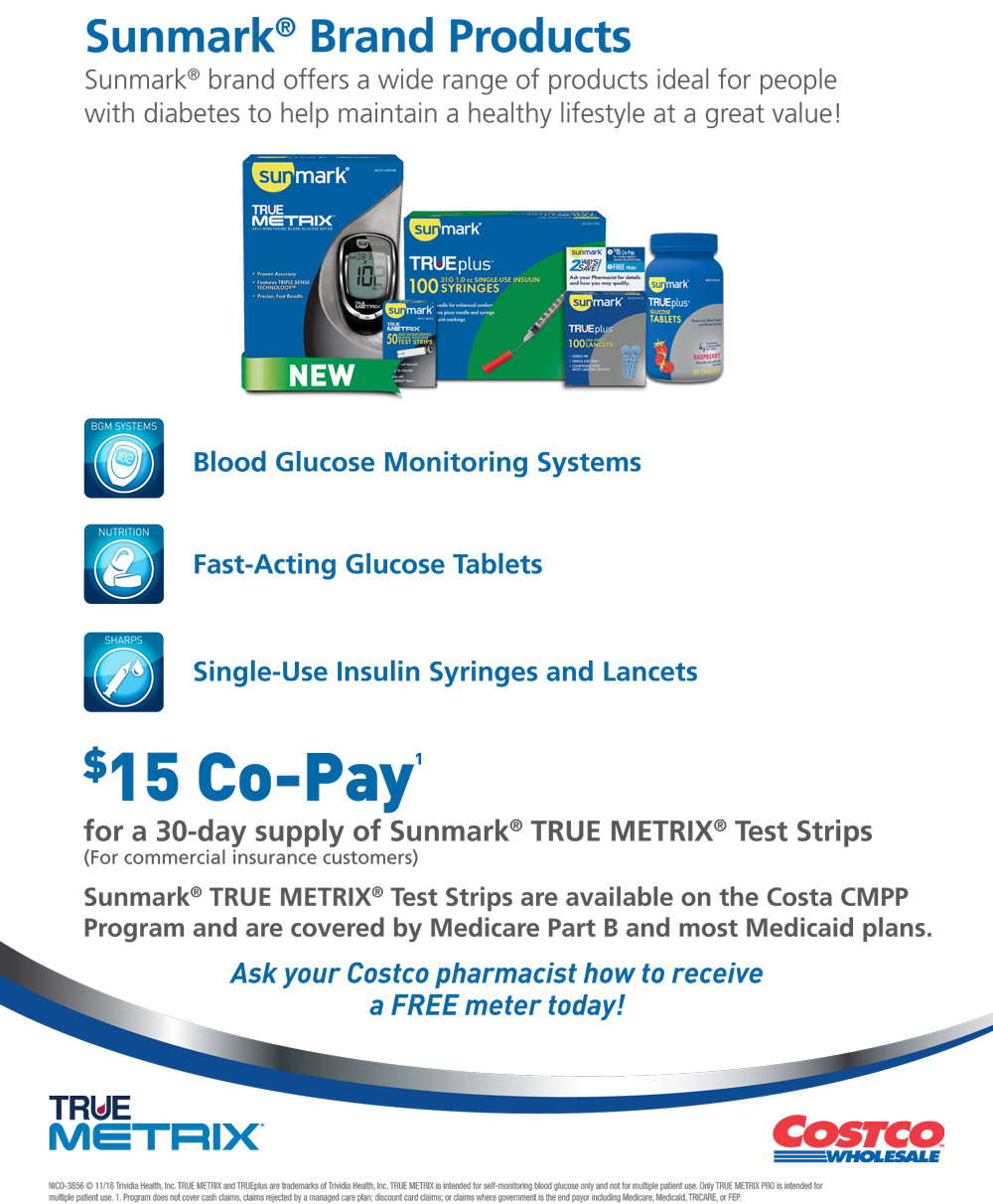
The post Sunmark? Brand Products appeared first on Fall 2016 Issue | CDiabetes Online Magazine.
]]>
By Robert Ehrman, MD If you have diabetes, you probably know that you are at an increased risk for problems with your eyes, feet, skin?and nervous system. Did you know that diabetes can also cause problems in your mouth? Take Care Of Your Teeth Poor blood glucose control lets bacteria grow easily in your mouth. Having lots of bacteria in your mouth lead to?plaque buildup on your teeth. When this happens, your gums begin to pull away from your teeth, and pockets form between your teeth and gums. These pockets can become filled with germs and small bits of food. The gums then become inflamed and may bleed when you eat or brush your teeth. This condition is called “gingivitis”. Keeping your gums healthy is important because they help to hold your teeth in place. If nothing is done, you can get an infection in your gums that can go on to destroy the bone around your teeth, and they may start to move. Your teeth may fall out or need to be pulled. A recent study at the University of Copenhagen in Denmark looked at the link between oral health and diabetes. The study found that people with good oral health practices, along with a healthy diet and good stress management, had?lower blood glucose levels and healthier teeth and gums. Diabetes: A Major Cause Of Gum Disease There are many causes of gum disease, including smoking, hormonal changes, and certain cancers. Some medicines can?make your mouth dry, which can increase your risk for tooth and gum problems. This is because saliva helps slow the growth of bacteria and keeps your mouth healthy overall. Poorly controlled diabetes can also lead to gum disease. High levels of sugar in saliva make it easy for bacteria to grow there. This is why poorly controlled diabetes is a risk factor for gum disease. Also, diabetes can cause problems with blood flow to your teeth and gums. This makes it harder to repair damage to your gums and fight infection. It is also important to understand that if you develop gum disease from poor oral habits or other reasons, this could make it harder for you to control your diabetes. Other oral problems related to diabetes include: Thrush: this is an infection caused by a fungus that grows in the mouth and throat Dry mouth: this can cause soreness, ulcers, infections and cavities Dental Check-ups Are Important It’s important that you tell your dentist if you have diabetes, and keep them informed of any changes in your condition or medicines. Postpone any non-emergency dental procedures if your blood sugar is not well controlled. What Can You Do To Keep Your Mouth Healthy? The most important thing you can do is control your blood glucose levels. Have dental check-ups every six months?if possible. Avoid smoking and, if you wear dentures, remove and clean them every day. Good blood glucose control can also help prevent or relieve the dry mouth diabetes can cause. Here are some simple tips for a healthy mouth: Keep your blood glucose level under control Brush and floss every day Visit your dentist at least every 6 months. Be sure to tell them that you have diabetes Tell your dentist if your dentures do not fit right, or if your gums are sore Stop smoking. Your healthcare provider or dentist can tell you about what options there are to help you quit Call your dentist if you notice a problem. Take time to check your mouth regularly for any problems. If your gums bleed when you brush or floss, or if you notice dryness, soreness, white patches, or a bad taste in your mouth, contact your dentist right away. Remember, good blood glucose control can help keep your mouth happy and healthy for years to come. 6 Signs Of Gum Disease Red or swollen gums Gums that bleed easily when brushing or flossing Receding gums (pulling away from teeth) Loose teeth, making it hard to bite and chew Constant bad breath Dentures that don’t fit anymore
The post Oral Health And Diabetes appeared first on Fall 2016 Issue | CDiabetes Online Magazine.
]]>
By Robert Ehrman, MD
If you have diabetes, you probably know that you are at an increased risk for problems with your eyes, feet, skin?and nervous system. Did you know that diabetes can also cause problems in your mouth?
Take Care Of Your Teeth
Poor blood glucose control lets bacteria grow easily in your mouth. Having lots of bacteria in your mouth lead to?plaque buildup on your teeth. When this happens, your gums begin to pull away from your teeth, and pockets form between your teeth and gums. These pockets can become filled with germs and small bits of food. The gums then become inflamed and may bleed when you eat or brush your teeth. This condition is called “gingivitis”.
Keeping your gums healthy is important because they help to hold your teeth in place. If nothing is done, you can get an infection in your gums that can go on to destroy the bone around your teeth, and they may start to move. Your teeth may fall out or need to be pulled.
A recent study at the University of Copenhagen in Denmark looked at the link between oral health and diabetes. The study found that people with good oral health practices, along with a healthy diet and good stress management, had?lower blood glucose levels and healthier teeth and gums.
Diabetes: A Major Cause Of Gum Disease
There are many causes of gum disease, including smoking, hormonal changes, and certain cancers. Some medicines can?make your mouth dry, which can increase your risk for tooth and gum problems. This is because saliva helps slow the growth of bacteria and keeps your mouth healthy overall. Poorly controlled diabetes can also lead to gum disease.
High levels of sugar in saliva make it easy for bacteria to grow there. This is why poorly controlled diabetes is a risk factor for gum disease. Also, diabetes can cause problems with blood flow to your teeth and gums. This makes it harder to repair damage to your gums and fight infection. It is also important to understand that if you develop gum disease from poor oral habits or other reasons, this could make it harder for you to control your diabetes.
Other oral problems related to diabetes include:
- Thrush: this is an infection caused by a fungus that grows in the mouth and throat
- Dry mouth: this can cause soreness, ulcers, infections and cavities
Dental Check-ups Are Important
It’s important that you tell your dentist if you have diabetes, and keep them informed of any changes in your condition or medicines. Postpone any non-emergency dental procedures if your blood sugar is not well controlled.
What Can You Do To Keep Your Mouth Healthy?
The most important thing you can do is control your blood glucose levels. Have dental check-ups every six months?if possible. Avoid smoking and, if you wear dentures, remove and clean them every day. Good blood glucose control can also help prevent or relieve the dry mouth diabetes can cause.
Here are some simple tips for a healthy mouth:
- Keep your blood glucose level under control
- Brush and floss every day
- Visit your dentist at least every 6 months. Be sure to tell them that you have diabetes
- Tell your dentist if your dentures do not fit right, or if your gums are sore
- Stop smoking. Your healthcare provider or dentist can tell you about what options there are to help you quit
- Call your dentist if you notice a problem.
Take time to check your mouth regularly for any problems. If your gums bleed when you brush or floss, or if you notice dryness, soreness, white patches, or a bad taste in your mouth, contact your dentist right away. Remember, good blood glucose control can help keep your mouth happy and healthy for years to come.
6 Signs Of Gum Disease
- Red or swollen gums
- Gums that bleed easily when brushing or flossing
- Receding gums (pulling away from teeth)
- Loose teeth, making it hard to bite and chew
- Constant bad breath
- Dentures that don’t fit anymore
The post Oral Health And Diabetes appeared first on Fall 2016 Issue | CDiabetes Online Magazine.
]]>
The post Colgate Total? Toothpaste appeared first on Fall 2016 Issue | CDiabetes Online Magazine.
]]>
The post Colgate Total? Toothpaste appeared first on Fall 2016 Issue | CDiabetes Online Magazine.
]]>
The post Nature Made? Diabetes Health Pack, 60 Packets appeared first on Fall 2016 Issue | CDiabetes Online Magazine.
]]>
The post Nature Made? Diabetes Health Pack, 60 Packets appeared first on Fall 2016 Issue | CDiabetes Online Magazine.
]]>
By Robert Ehrman, MD ? Reviewed by Fran Daniel, MPH First, it is important to note that eating a variety of whole foods is a better choice for staying healthy than relying on vitamins or supplements.?Eating lean meats, vegetables, fruits, and whole grains- and limiting fats and sugar — are important for keeping your blood glucose under control. Individual foods can give you many different vitamins, minerals, and nutrients, in one?serving. For example, raspberries contain vitamin C, fiber, and antioxidants. These nutrients, plus all?the food nutrients we have not yet discovered, work?together in your body to ensure that you benefit from all of them. Using vitamins or supplements – which do not have the full range of nutrients that whole foods do — may not?be needed unless you have a specific vitamin deficiency. (“Deficiency” means that your body does not have enough?of an important nutrient.) It’s a good idea to talk to your healthcare provider before taking any vitamin supplements to see if you really need them. Your healthcare provider may want you to take?vitamin supplements if you are: On a low-calorie diet and do?not eat a wide variety of foods On a vegan diet (no meat, fish, eggs or dairy products) Pregnant On a restricted diet because you?have food allergies, kidney disease?or have trouble absorbing nutrients What Vitamins Are The Best? Many people, including those with diabetes, may?need to take vitamin D supplements.?Experts say to take 400 international units (IU) each day. Recent studies suggest that this may not be enough vitamin D. Ask your healthcare provider if you ?should take vitamin D supplements,?and how much to take every day. Why Is Vitamin D So Important For Good Health? Vitamin D might be able to: improve pain and tingling in your legs, feet, hands, and fingers. keep bones healthy and strong help with blood glucose control help ease depression in women with type 2 diabetes. How Can I Get More Vitamin D? Go outside in the sunshine. Sunshine is a great way to get vitamin D. To be safe, first check with your healthcare provider to make sure it’s safe for you to spend time in the sun. Eat more fish and egg yolks. Eat cereals with vitamin D added. Drink milk with vitamin D added. Take Vitamin D supplements if your healthcare provider recommends it. Vitamin D and calcium work together. Ask your healthcare provider if it’s a good idea for you to take Vitamin D with a calcium supplement. What about Chromium, and Vitamins C and E? There are some studies showing that these nutrients might be helpful for blood glucose control or heart health, but more research is needed. News stories over the past few years have reported that chromium might decrease body fat and build muscle without you having to change your eating habits. But, studies have not shown that chromium helps you lose weight. Also, it is not known how much chromium you should take. Fortunately, it is relatively safe. In fact, many healthcare providers tell their patients with diabetes to take chromium supplements. However, don’t take a chromium supplement without first talking with your healthcare team and knowing the correct amount to take. You might damage your kidneys if you take too much chromium. Good food sources of chromium include whole grains, bran cereals, seafood, green beans, nuts, peanut butter, and potatoes. People with diabetes may have lower levels of vitamin C in their bodies. This may be because higher blood glucose levels keep vitamin C out of the body’s cells. In one study, people with type 2 diabetes who took 2,000 mg of Vitamin C every day showed improvement in blood glucose and fat levels. However, more studies need to be done to confirm the benefits for people with diabetes so ask your healthcare provider first before taking vitamin C supplements. Some studies say that vitamin E might help prevent health problems such as heart disease, eye problems and kidney damage. However, it’s too early to know if this is true. In addition, experts are not sure how much vitamin E you should take. Vitamin E amounts greater than 800 IU each chance of stroke in people with high blood pressure. Too much vitamin E can also keep medicines that prevent blood clots from working. If you want to take vitamin E, ask your healthcare provider first about the pros and cons and if you do decide to take vitamin E, do not take more than 200 Tips for Taking Supplements Pick supplements with no more than 100 to 150 percent of the daily value for the listed vitamins and minerals Women who have gone through menopause should choose a supplement without iron Choose a brand that has the USP seal on the package. A USP (U.S. Pharmacopeia) seal says the product has been tested for strength and purity Check expiration dates; do not use expired supplements Keep supplements in a cool, dry place, and out of reach of children.
The post Vitamins and Diabetes Care appeared first on Fall 2016 Issue | CDiabetes Online Magazine.
]]>
By Robert Ehrman, MD ? Reviewed by Fran Daniel, MPH
First, it is important to note that eating a variety of whole foods is a better choice for staying healthy than relying on vitamins or supplements.?Eating lean meats, vegetables, fruits, and whole grains- and limiting fats and sugar — are important for keeping your blood glucose under control.
Individual foods can give you many different vitamins, minerals, and nutrients, in one?serving. For example, raspberries contain vitamin C, fiber, and antioxidants. These nutrients, plus all?the food nutrients we have not yet discovered, work?together in your body to ensure that you benefit from all of them. Using vitamins or supplements – which do not have the full range of nutrients that whole foods do — may not?be needed unless you have a specific vitamin deficiency. (“Deficiency” means that your body does not have enough?of an important nutrient.) It’s a good idea to talk to your healthcare provider before taking any vitamin supplements to see if you really need them.
Your healthcare provider may want you to take?vitamin supplements if you are:
- On a low-calorie diet and do?not eat a wide variety of foods
- On a vegan diet (no meat, fish, eggs or dairy products)
- Pregnant
- On a restricted diet because you?have food allergies, kidney disease?or have trouble absorbing nutrients
What Vitamins Are The Best?
Many people, including those with diabetes, may?need to take vitamin D supplements.?Experts say to take 400 international units (IU) each day. Recent studies suggest that this may not be enough vitamin D. Ask your healthcare provider if you ?should take vitamin D supplements,?and how much to take every day.
Why Is Vitamin D So Important For Good Health?
Vitamin D might be able to:
- improve pain and tingling in your legs, feet, hands, and fingers.
- keep bones healthy and strong
- help with blood glucose control
- help ease depression in women with type 2 diabetes.
How Can I Get More Vitamin D?
-
Go outside in the sunshine. Sunshine is a great way to get vitamin D. To be safe, first check with your healthcare provider to make sure it’s safe for you to spend time in the sun.
- Eat more fish and egg yolks.
- Eat cereals with vitamin D added.
- Drink milk with vitamin D added.
- Take Vitamin D supplements if your healthcare provider recommends it.
- Vitamin D and calcium work together. Ask your healthcare provider if it’s a good idea for you to take Vitamin D with a calcium supplement.
What about Chromium, and Vitamins C and E?
There are some studies showing that these nutrients might be helpful for blood glucose control or heart health, but more research is needed. News stories over the past few years have reported that chromium might decrease body fat and build muscle without you having to change your eating habits. But, studies have not shown that chromium helps you lose weight. Also, it is not known how much chromium you should take. Fortunately, it is relatively safe. In fact, many healthcare providers tell their patients with diabetes to take chromium supplements. However, don’t take a chromium supplement without first talking with your healthcare team and knowing the correct amount to take. You might damage your kidneys if you take too much chromium. Good food sources of chromium include whole grains, bran cereals, seafood, green beans, nuts, peanut butter, and potatoes.
People with diabetes may have lower levels of vitamin C in their bodies. This may be because higher blood glucose levels keep vitamin C out of the body’s cells. In one study, people with type 2 diabetes who took 2,000 mg of Vitamin C every day showed improvement in blood glucose and fat levels. However, more studies need to be done to confirm the benefits for people with diabetes so ask your healthcare provider first before taking vitamin C supplements. Some studies say that vitamin E might help prevent health problems such as heart disease, eye problems and kidney damage. However, it’s too early to know if this is true. In addition, experts are not sure how much vitamin E you should take. Vitamin E amounts greater than 800 IU each chance of stroke in people with high blood pressure. Too much vitamin E can also keep medicines that prevent blood clots from working. If you want to take vitamin E, ask your healthcare provider first about the pros and cons and if you do decide to take vitamin E, do not take more than 200
Tips for Taking Supplements
- Pick supplements with no more than 100 to 150 percent of the daily value for the listed vitamins and minerals
- Women who have gone through menopause should choose a supplement without iron
- Choose a brand that has the USP seal on the package. A USP (U.S. Pharmacopeia) seal says the product has been tested for strength and purity
- Check expiration dates; do not use expired supplements
- Keep supplements in a cool, dry place, and out of reach of children.
The post Vitamins and Diabetes Care appeared first on Fall 2016 Issue | CDiabetes Online Magazine.
]]>
The post Kirkland Signature? CoQ10 300 mg., 100 Softgels appeared first on Fall 2016 Issue | CDiabetes Online Magazine.
]]>
The post Kirkland Signature? CoQ10 300 mg., 100 Softgels appeared first on Fall 2016 Issue | CDiabetes Online Magazine.
]]>
Makes 4 Servings Ingredients 1 large sweet onion, cut into ?-inch slices 1 tablespoon plus 1 teaspoon olive oil, divided 1 large head romaine lettuce, cut in half lengthwise with core intact ? cup shredded Parmesan cheese 1 (2-ounce) kaiser roll, split in half ? cup light Caesar vinaigrette Directions Preheat grill to medium heat. Place onions on grill and cook 3 to 4 minutes on each side, or until browned. Drizzle 1 tablespoon olive oil on cut sides of romaine and place on grill. Cook each side 4 to 5 minutes, or just until lettuce begins to wilt. Meanwhile, brush remaining olive oil on cut sides of kaiser roll and place, oil side down, on grill. Grill for 1 to 2 minutes, or until roll gets crispy. Cut roll into ?-inch cubes for croutons. Place romaine on a platter; cut each half in half again. Top each romaine wedge with onion, Parmesan cheese, croutons, and Caesar vinaigrette, distributing evenly. Serve warm. NUTRITION INFORMATION PER SERVING: Calories 215, Calories from Fat 110, Total Fat 12g, Saturated Fat 3g, Trans Fat 0g, Cholesterol 5mg, Sodium 560 mg, Potassium 475mg, Total Carbohydrate 21g, Dietary Fiber 4g, Sugars 7g, Protein 6g, Phosphorus 105mg Exchanges: ? Starch, 2 Vegetable, 2? Fat
The post Warm Winter Sides: Grilled Caesar Salad appeared first on Fall 2016 Issue | CDiabetes Online Magazine.
]]>
The post Warm Winter Sides: Grilled Caesar Salad appeared first on Fall 2016 Issue | CDiabetes Online Magazine.
]]>
Makes 6 Servings Ingredients 3 tablespoons vegetable oil ? teaspoon salt 2 large unpeeled sweet potatoes, cut into 1?-inch slices with ends discarded ? cup light brown sugar ? cup chopped pecans ? teaspoon ground cinnamon 1 tablespoon light margarine, softened Directions Preheat oven to 400°F. In a large bowl, combine oil and salt; mix well. Add sweet potatoes and toss until evenly coated, then place on a rimmed baking sheet. Cook 25 to 30 minutes, or until fork-tender. Meanwhile, in a small bowl, mix together brown sugar, pecans, cinnamon, and margarine until crumbly. Sprinkle on each potato round and return to oven; cook 8 to 10 minutes, or until sugar is melted. Serve immediately. NUTRITION INFORMATION PER SERVING: Calories 180, Calories from Fat 100, Total Fat 11g, Saturated Fat 1.1g, Trans Fat 0g, Cholesterol 0mg, Sodium 230mg, Potassium 315mg, Total Carbohydrate 19g, Dietary Fiber 2g, Sugars 10g, Protein 2g, Phosphorus 45mg Exchanges: 1 Starch, ? Carbohydrate, 2 Fat
The post Warm Winter Sides: Sweet Potato Crowns appeared first on Fall 2016 Issue | CDiabetes Online Magazine.
]]>
The post Warm Winter Sides: Sweet Potato Crowns appeared first on Fall 2016 Issue | CDiabetes Online Magazine.
]]>
Available only at Costco Wholesale Outlets
The post Upgrade To True Metrix? Self-Monitoring Blood Glucose System appeared first on Fall 2016 Issue | CDiabetes Online Magazine.
]]>
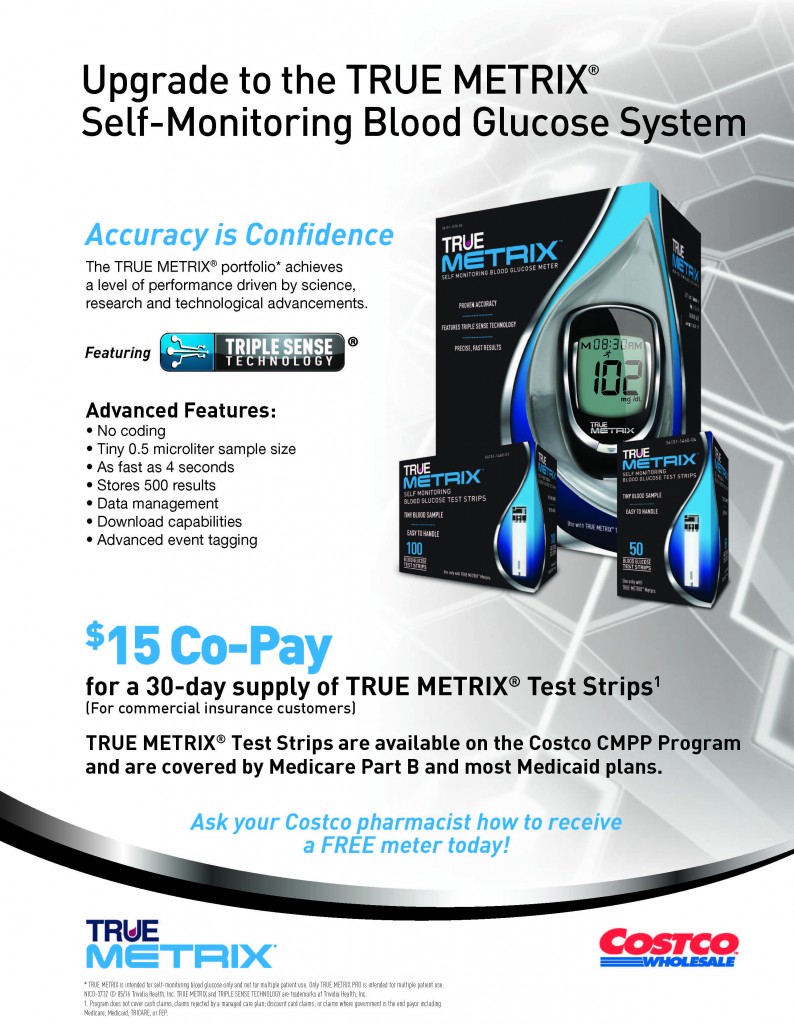
The post Upgrade To True Metrix? Self-Monitoring Blood Glucose System appeared first on Fall 2016 Issue | CDiabetes Online Magazine.
]]>
Makes 3 Servings Ingredients 2 tablespoons olive oil ? teaspoon onion powder ? teaspoon garlic powder ? teaspoon kosher salt ? teaspoon black pepper 4 large bell peppers (assorted colors), seeded and quartered Directions Preheat oven to 450°F. In a medium bowl, combine all ingredients except bell peppers; mix well. Add peppers to the bowl and toss to coat well. Place peppers on a baking sheet. Roast 20 to 25 minutes, or until tender. Test Kitchen Tip: The key to really good roasted peppers is to make sure the oven is hot enough. If you want, you can peel the skin off the peppers once they are cooked. NUTRITION INFORMATION PER SERVING: Calories 125, Calories from Fat 90, Total Fat 10g, Saturated Fat 1g, Trans Fat 0g, Cholesterol 0mg, Sodium 160mg, Potassium 375mg, Total Carbohydrate 11g, Dietary Fiber 4g, Sugars 7g, Protein 2g, Phosphorus 45mg Exchanges: 2 Vegetable, 2 Fat
The post Warm Winter Sides: Rainbow Roasted Peppers appeared first on Fall 2016 Issue | CDiabetes Online Magazine.
]]>
The post Warm Winter Sides: Rainbow Roasted Peppers appeared first on Fall 2016 Issue | CDiabetes Online Magazine.
]]>
Exclusively from Costco Wholesale WAREHOUSE/COSTCO.COM | AVAILABLE NOW Item #906492 (Quit 4 Lozenges), #650382 (Quit 4 Gum), #906476 (Quit 2 Lozenges), #650377 (Quit 2 Gum
The post A Real-Life Costco Pharmacist On: Real Relationships appeared first on Fall 2016 Issue | CDiabetes Online Magazine.
]]>
Exclusively from Costco Wholesale
WAREHOUSE/COSTCO.COM | AVAILABLE NOW
Item #906492 (Quit 4 Lozenges), #650382 (Quit 4 Gum), #906476 (Quit 2 Lozenges), #650377 (Quit 2 Gum
The post A Real-Life Costco Pharmacist On: Real Relationships appeared first on Fall 2016 Issue | CDiabetes Online Magazine.
]]>
The post Nature Made? Vitamins appeared first on Fall 2016 Issue | CDiabetes Online Magazine.
]]>
The post Nature Made? Vitamins appeared first on Fall 2016 Issue | CDiabetes Online Magazine.
]]>
By Martha Funnell, MS, RN, CDE You may have heard people in politics or other areas of public life described as being like Teflon. No matter what they do, nothing bad ever seems to stick to them. When it comes to your health, being Teflon is a good thing. IT’S NOT THE STRESSOR, IT’S THE RESPONSE Many people think of stress as causing health problems. But results from part of a large study called “Midlife in the United States“ have shown that just being stressed does not cause problems. It’s the response that people have to stressors that’s at issue. And that response can affect your health 10 years into the future, regardless of your health today. The study found that people who got upset by daily stressors and continued to dwell on them after they were over were more likely to suffer from chronic health problems—especially pain and heart disease—10 years later. VELCRO OR TEFLON? Researchers in this study describe some people as Teflon and some as Velcro. When a stressful event happens to Velcro types, they get upset and stay upset. With Teflons, the stressors slide right off; they are able to let go of a problem or upsetting situation. All you have to do is stand in a long line to see people react like Teflon and Velcro. Everyone is in the same line: Some people find it upsetting, while others don’t. The Velcro person is still fuming even after reaching the front of the line, while the Teflon person can let it go more easily. So even though you don’t always have a choice about standing in a long line, you do have a choice about how you react. FIND YOUR INNER TEFLON People who react more like Teflon are better able to balance the negative and positive aspects of their lives. One way to find that balance is to do more of the things you enjoy and fewer of those things that drain your energy. Another idea is to reframe your view or perception of the stress. Try asking yourself, “What is the worst thing that can happen if I have to stand in this long line? What is the best thing that can happen if I get upset about it?” STRESS AND DIABETES When you are stressed, your body releases hormones to help you deal with the stress. They’re the flight-or-fight hormones. These same hormones raise blood glucose levels. Look at your blood glucose readings when you are stressed. Do you see numbers higher than usual? Your high levels may be caused by these hormones. Some people eat more or sleep more when they feel stressed. Eating more can, in turn, lead to higher blood glucose readings. Other people may eat less or toss and turn at night. Some people find it hard to exercise when they are feeling stressed out, and others find that exercise helps burn up some of the negative energy. Exercise is also a way to cope with stress. Exercise releases endorphins, the feel-good hormones that counter-act the effects of the stress hormones. Many people find taking a brisk walk or going to the gym after work helps them leave their stress behind. 7 IDEAS FOR FINDING YOUR INNER TEFLON 1 Find the support you need. Find a good listener, or join a support group. Pray, meditate or practice your religion. 2 Know your limits. Don’t try to do more than you can. Learn to say no to people or events that will raise your stress level. You don’t have to do it all. Do fewer things and do them better. 3 Plan your day and set goals you can meet. Make time to take care of yourself and your health. Take breaks during stressful times or events. Make it a point to relax, take a nap or watch a funny movie. 4 Take a stress management class or practice relaxation exercises. Community and senior centers, the library or the Internet are good resources. 5 Avoid stressful situations when possible. If you can’t, plan ahead how you will handle the stress. 6 Express your feelings. It is OK to cry when you’re sad or upset, but try to laugh every day. 7 Use your energy in a positive way. Hobbies, things you enjoy, laughing or spending time with upbeat people can help you handle your stress. When you have diabetes, you may see the effect of the stress right away. The way you handle stress can affect your blood glucose. If stress is causing you serious anxiety or is getting in the way of you enjoying your life, ask your healthcare provider for a referral to a behavioral health professional for help. Although stress is a fact of life for most of us, you can learn to better handle the stress you experience and live a longer, happier, healthier life.
The post Velcro OR Teflon: Which One Are You? appeared first on Fall 2016 Issue | CDiabetes Online Magazine.
]]>
By Martha Funnell, MS, RN, CDE
You may have heard people in politics or other areas of public life described as being like Teflon. No matter what they do, nothing bad ever seems to stick to them. When it comes to your health, being Teflon is a good thing.
IT’S NOT THE STRESSOR, IT’S THE RESPONSE
Many people think of stress as causing health problems. But results from part of a large study called “Midlife in the United States“ have shown that just being stressed does not cause problems. It’s the response that people have to stressors that’s at issue. And that response can affect your health 10 years into the future, regardless of your health today. The study found that people who got upset by daily stressors and continued to dwell on them after they were over were more likely to suffer from chronic health problems—especially pain and heart disease—10 years later.
VELCRO OR TEFLON?
Researchers in this study describe some people as Teflon and some as Velcro. When a stressful event happens to Velcro types, they get upset and stay upset. With Teflons, the stressors slide right off; they are able to let go of a problem or upsetting situation.
All you have to do is stand in a long line to see people react like Teflon and Velcro. Everyone is in the same line: Some people find it upsetting, while others don’t. The Velcro person is still fuming even after reaching the front of the line, while the Teflon person can let it go more easily. So even though you don’t always have a choice about standing in a long line, you do have a choice about how you react.
FIND YOUR INNER TEFLON
People who react more like Teflon are better able to balance the negative and positive aspects of their lives. One way to find that balance is to do more of the things you enjoy and fewer of those things that drain your energy.
Another idea is to reframe your view or perception of the stress. Try asking yourself, “What is the worst thing that can happen if I have to stand in this long line? What is the best thing that can happen if I get upset about it?”
STRESS AND DIABETES
When you are stressed, your body releases hormones to help you deal with the stress. They’re the flight-or-fight hormones. These same hormones raise blood glucose levels. Look at your blood glucose readings when you are stressed. Do you see numbers higher than usual? Your high levels may be caused by these hormones.
Some people eat more or sleep more when they feel stressed. Eating more can, in turn, lead to higher blood glucose readings. Other people may eat less or toss and turn at night.
Some people find it hard to exercise when they are feeling stressed out, and others find that exercise helps burn up some of the negative energy. Exercise is also a way to cope with stress. Exercise releases endorphins, the feel-good hormones that counter-act the effects of the stress hormones. Many people find taking a brisk walk or going to the gym after work helps them leave their stress behind.
7 IDEAS FOR FINDING YOUR INNER TEFLON
1 Find the support you need.
Find a good listener, or join a support group. Pray, meditate or practice your religion.
2 Know your limits.
Don’t try to do more than you can. Learn to say no to people or events that will raise your stress level. You don’t have to do it all. Do fewer things and do them better.
3 Plan your day and set goals you can meet.
Make time to take care of yourself and your health. Take breaks during stressful times or events. Make it a point to relax, take a nap or watch a funny movie.
4 Take a stress management class or practice relaxation exercises.
Community and senior centers, the library or the Internet are good resources.

5 Avoid stressful situations when possible.
If you can’t, plan ahead how you will handle the stress.
6 Express your feelings.
It is OK to cry when you’re sad or upset, but try to laugh every day.
7 Use your energy in a positive way.
Hobbies, things you enjoy, laughing or spending time with upbeat people can help you handle your stress.
When you have diabetes, you may see the effect of the stress right away. The way you handle stress can affect your blood glucose. If stress is causing you serious anxiety or is getting in the way of you enjoying your life, ask your healthcare provider for a referral to a behavioral health professional for help. Although stress is a fact of life for most of us, you can learn to better handle the stress you experience and live a longer, happier, healthier life.
The post Velcro OR Teflon: Which One Are You? appeared first on Fall 2016 Issue | CDiabetes Online Magazine.
]]>

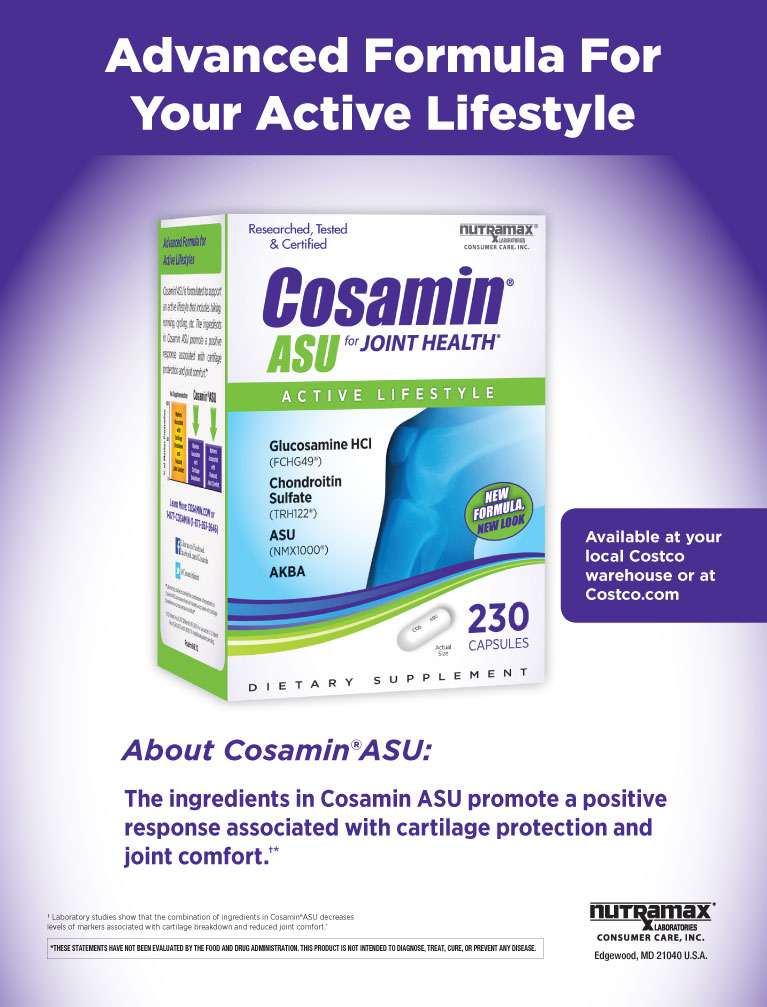

![tn_CinSulin_ad_2016[4x5]](http://www.keixun.com.cn/fall2016/wp-content/uploads/2016/01/tn_CinSulin_ad_20164x5-229x300.jpg)
![tn_CinSulin_ad_2016[4x5]](http://www.keixun.com.cn/fall2016/wp-content/uploads/2016/01/tn_CinSulin_ad_20164x5.jpg)



